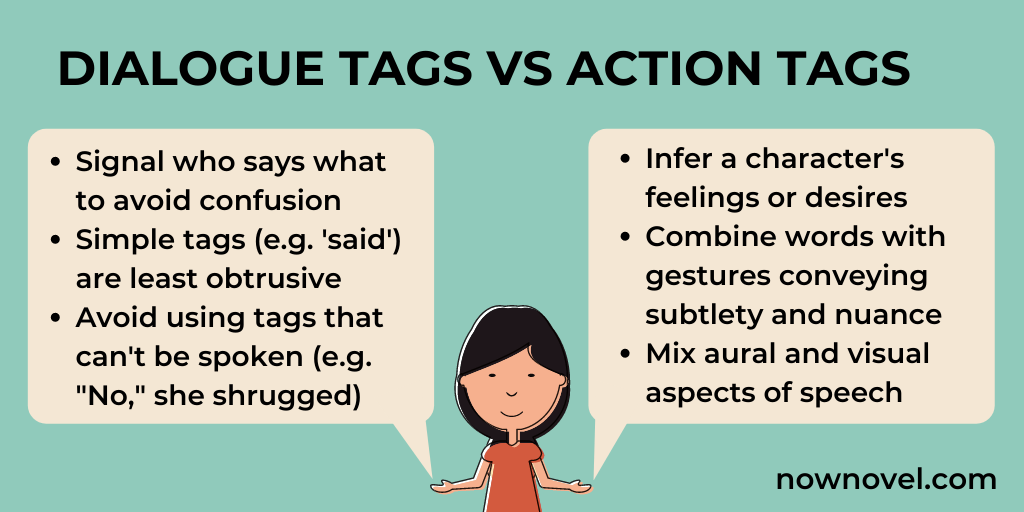
One side argues that the only dialogue tags necessary are said and asked. There’s a debate on how often to deviate from using a simple “said” to mark dialogue tags. Notice how you can either include the dialogue tag (“Ben said”) or just use the action itself as the dialogue tag. “Yeah, you too,” Ben said, biting the inside of his lip. If you are trying to insert action or description, you can use it as the dialogue tag.

If you are writing with multiple (three or more) characters, use only enough dialogue tags to clearly indicate who is speaking. The second example, which removes the the second set of dialogue tags, reads faster and is simpler. If the characters are previously introduced, the tags aren’t needed. In this case the dialogue tags are almost as long as the dialogue itself, and they become unnecessary and distracting. For example, this exchange has too many tags if there are only two people in the conversation: If you are writing short dialogue, where each line is only a few words, you can use fewer dialogue tags. Make your dialogue easy for your readers to understand and read. How often do you need to tell the reader who is speaking? There are a few different rules to decide how often you use dialogue tags. I came across this question recently in a writing group.

#Dialogue tags rules how to
How To Use Dialogue Tagsĭialogue tags are found in three different places: before, after, or in the middle of dialogue. The phrase “asked Katie” is the dialogue tag in the sentence. What is a Dialogue Tag?Ī dialogue tag, also known as an attribution, is a small phrase either before, after, or in the middle of actual dialogue that indicates the speaker. Let’s take a closer look at dialogue tags and how to use them.

If you’ve played with dialogue for long, you quickly come up against some of the questions of how to properly format it on the page, what tags to use, and how to keep it from feeling redundant. Recently we talked about why dialogue is important, along with the seven critical roles it plays in stories. How can you use dialogue tags effectively in your stories to produce clear dialogue that zings? Writers encounter dialogue every day, but too often recently I’ve seen great stories ruined by choppy, incoherent, and straight-up weird dialogue. Dialogue Tags: What Are They and How To Use Them


 0 kommentar(er)
0 kommentar(er)
